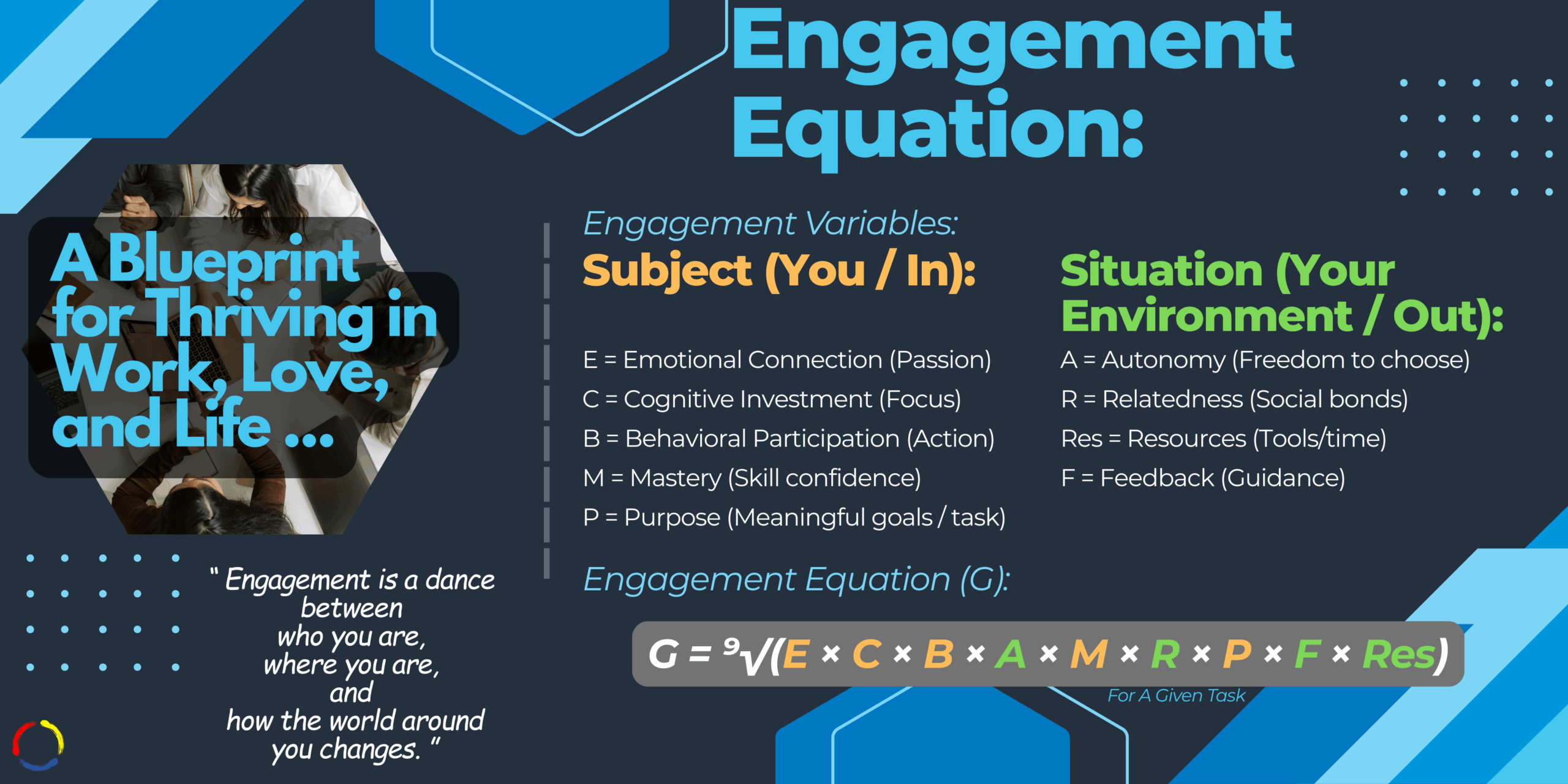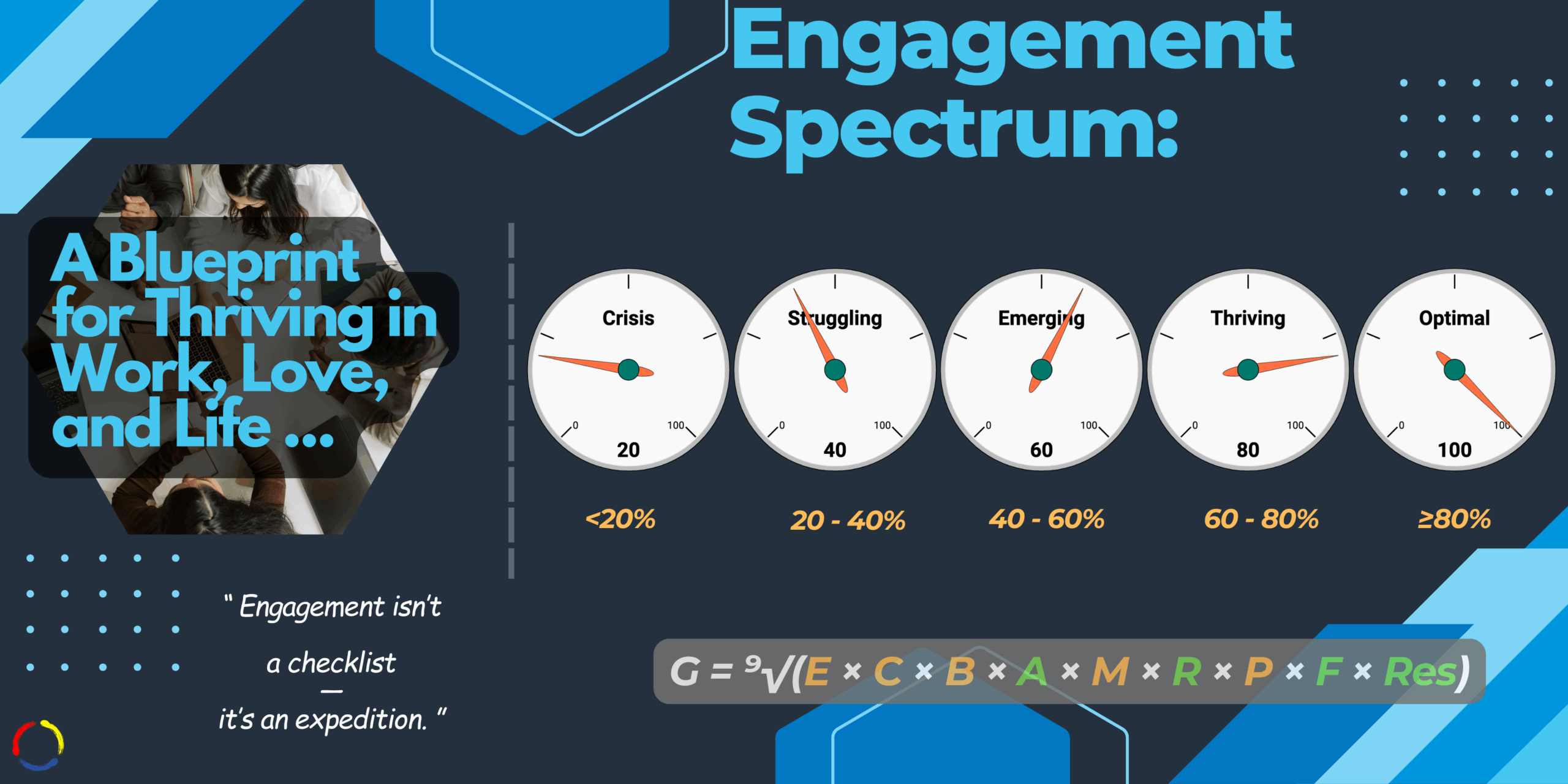A Blueprint for Thriving in Work, Love, and Life …
Introduction: Why Engagement Matters?
The Engagement Equation

G = ⁹√(E × C × B × A × M × R × P × F × Res). (Eq1)
What It Means:
- G = Total Engagement (0–100%)
- Variables: Scored between 0 (absent) and 1 (fully present)
The 9 Pillars of Engagement
E = Emotional Connection (Passion)
C = Cognitive Investment (Focus)
B = Behavioral Participation (Action)
M = Mastery (Skill confidence)
P = Purpose (Meaningful goals)
Situation (Your Environment / External Dimension):
A = Autonomy (Freedom to choose)
R = Relatedness (Social bonds)
F = Feedback (Guidance)
Res = Resources (Tools/time)
Key Insight: Engagement thrives when who you are (Subject) and where you are (Situation) work together.
The Engagement Spectrum: 5 Levels


Real-World Applications
- Workplace Engagement
Crisis (G = 15%): Micromanaged employee with no tools or trust.
Fixes: Grant autonomy (A), allocate training (Res).
Optimal (G = 85%): Purpose-driven team with resources and feedback.
Tip: Use “EVERY COMPONENT BUILDS…” as a mantra.
- Romantic Relationships
Struggling (G = 50%): Couple with shared goals but poor communication.
Fixes: Schedule weekly check-ins (F), plan date nights (Res).
- Parenting
Emerging (G = 48%): Child lacks confidence and resources.
Fixes: Praise progress (M), provide learning tools (Res).
- Citizen-Society Engagement
Optimal (G = 85%): Civic-minded community with responsive governance.
Tip: Use participatory budgeting (F) to boost trust (R).
How to Use the Equation
- Score Yourself: Rate each variable (0–1) in your current context.
- Calculate G: Use the formula (Eq1).
- Act on Weak Links: Prioritize variables dragging your score.
Pro Tip: Start with autonomy (A) and resources (Res)—they’re quick wins.
Conclusion:
- No Fluff: Rooted in psychology (Self-Determination Theory) and systems thinking.
- Actionable: Fixes are specific, not vague “try harder” advice.
- Universal: Applies to CEOs, parents, activists, and everyone in between.
Final Thought
Engagement isn’t luck—it’s a skill. By mastering the Equation, you transform disconnection into purpose, friction into flow, and stagnation into growth.
Your Turn: What’s your Engagement Score? Take the quiz below and share your results!
Key Takeaways
- Engagement = Subject (You) × Situation (Environment)
- Weakest links (e.g., poor feedback) tank your score—fix them first
- Thriving requires both agency (mindset) and accountability (systems)
0 Comments